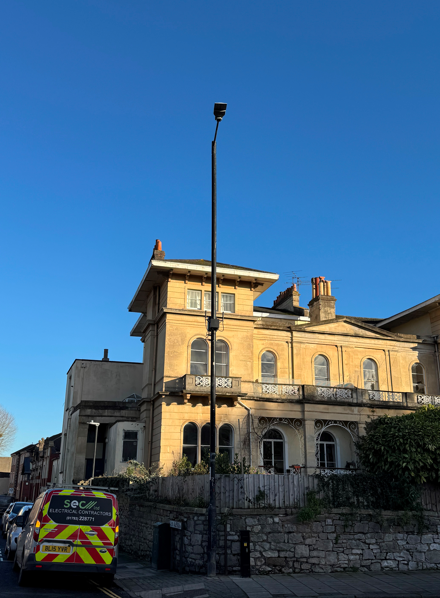28 July 2025

The collaboration between O2 and Ontix has seen the installation of small cell technology in some of the busiest locations, including around the University of Bristol’s prominent buildings, the renowned Clifton Suspension Bridge visitor centre, and popular shopping and dining precincts. With thousands of tourists visiting the iconic bridge each year and a significant student population, these small cells are providing a vital boost to network capacity in these high-footfall zones.
The partnership is part of a broader initiative by O2 and Ontix to roll out small cell technology across various high-demand locations throughout the UK, including cities such as London, Birmingham, Reading, Cambridge, Plymouth, and Chester. These small cells are recognised as a cost-effective and efficient solution to enhancing network connectivity in densely populated urban environments, ensuring better service for both residents and visitors.
Richard Williams, Director of Acquisition at Ontix, highlighted the significance of the project, noting that Clifton’s historic connection to engineer Isambard Kingdom Brunel and the Clifton Suspension Bridge reflects a legacy of innovation. He emphasised that Ontix’s deployment of small cell technology continues this tradition by driving advancements in connectivity, ultimately ensuring the community benefits from world-class mobile services aligned with the area’s proud heritage of progress.
Bristol City Council’s Chair of the Transport and Connectivity Committee, Councillor Ed Plowden, stressed the importance of reliable digital connectivity for the city’s future prosperity. He acknowledged that persistent issues with mobile coverage and speeds in key gathering spots have been frustrating and highlighted the council’s collaboration with telecom partners like Ontix and O2. By utilising street lighting columns in areas with poor signal, these companies are working to improve mobile service for residents and visitors alike, with council officers playing a key role in supporting these upgrades.
Dr Rob Joyce, Director of Mobile Access Engineering at Virgin Media O2, underlined the company’s ongoing commitment to improving network quality through its Mobile Transformation Plan, which involves a £700 million investment this year. He pointed out that small cells are a crucial element of this strategy, providing targeted local network enhancements to meet increasing customer demand. He also noted that Clifton Suspension Bridge, one of the country’s most iconic landmarks, will now benefit from a more reliable network connection, enhancing visitors’ experiences.
These upgrades form part of O2’s broader Mobile Transformation Plan, which aims to invest around £700 million in 2023 to future-proof its network infrastructure. The plan’s key focus areas include expanding 4G and 5G coverage, deploying additional small cells to bolster capacity in densely populated areas, and implementing innovative solutions to address persistent network issues along railway lines, airports, motorways, and in stadiums and arenas. Additionally, O2 recently announced a deal with Vodafone UK to acquire 78.8 MHz of spectrum, increasing its total spectrum holding to approximately 30% of the UK’s mobile spectrum and significantly strengthening its network capabilities.










